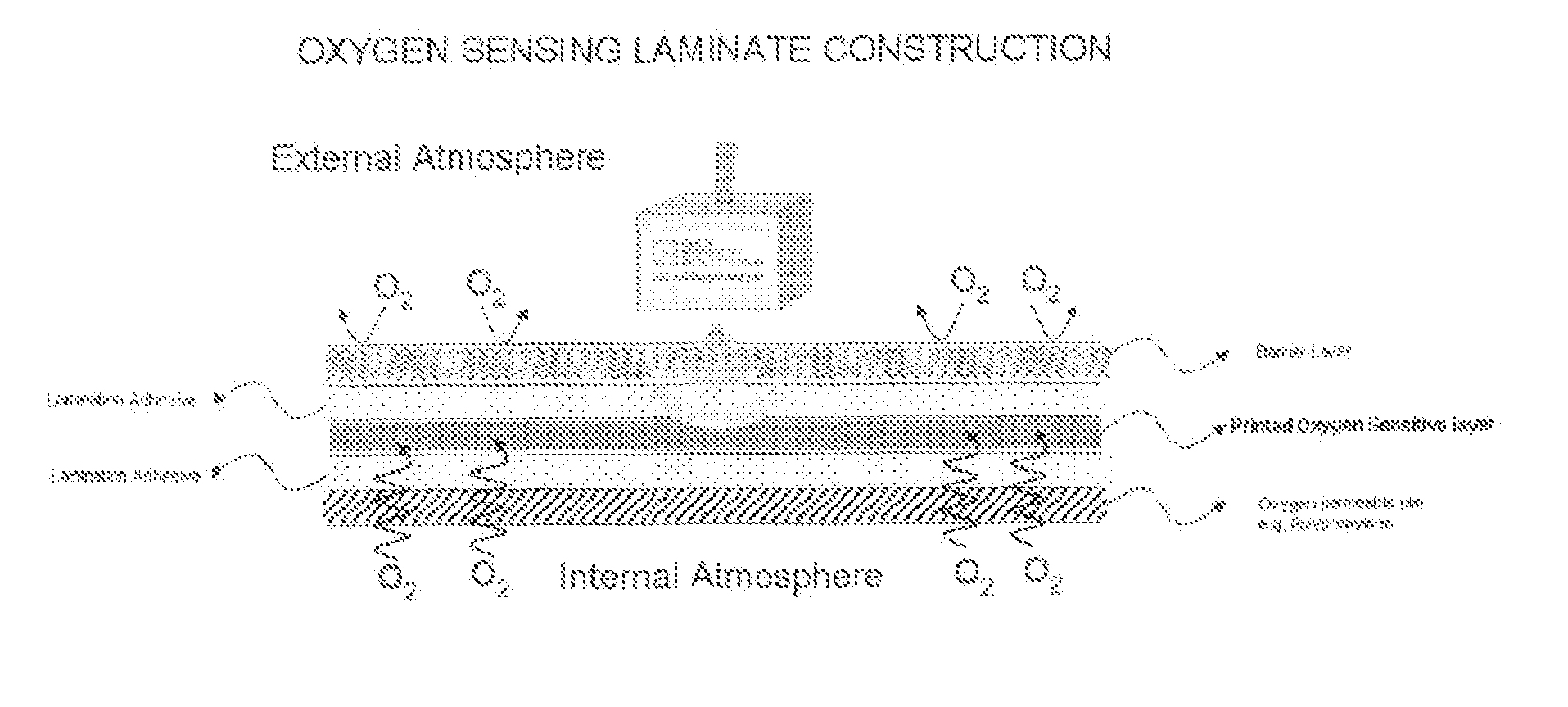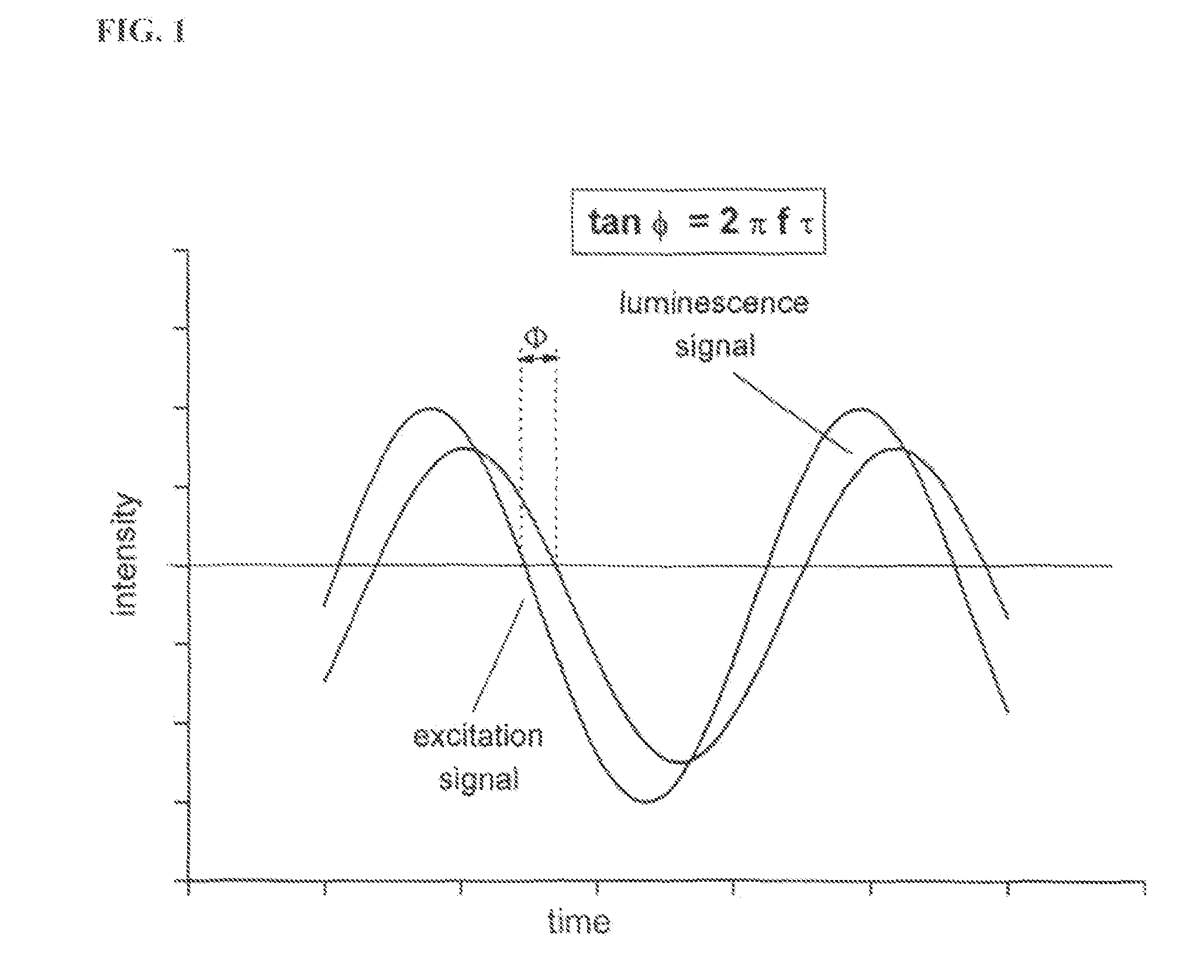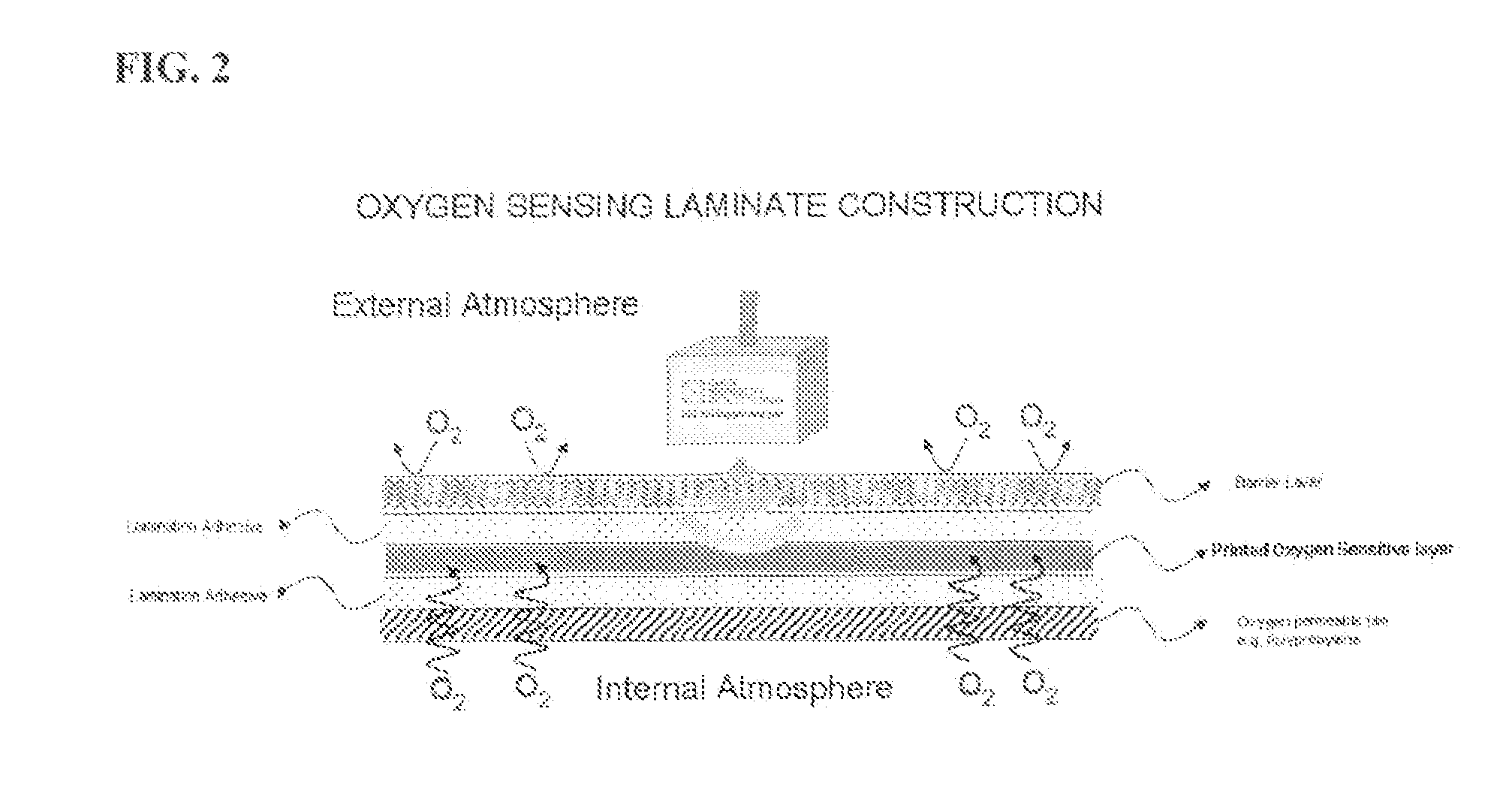Inks and coatings for the production of oxygen sensitive elements with improved photostability
a technology of oxygen sensitive elements and inks, applied in the direction of inks, printing, synthetic resin layered products, etc., can solve the problems of affecting the quality of oxygen sensitive elements, etc., to achieve cost-effective, reduce the effect of photobleaching effect and increase the phototability
- Summary
- Abstract
- Description
- Claims
- Application Information
AI Technical Summary
Benefits of technology
Problems solved by technology
Method used
Image
Examples
example 1
Preparation of Non Photostabilized Ink-Jet Ink
[0044]150 mL of Ethyl Acetate is mixed with 40 mL of isopropanol. 8 g of cellulose acetate butyrate Mr 12,000 is added. The mixture is thoroughly stirred. 0.4 g of Ru-tris(4,7-diphenyl-1,10-phenanthroline) dichloride added to 40 mL of isopropanol. The mixture is stirred until all the Ru-tris(4,7-diphenyl-1,10-phenanthroline) dichloride is fully dissolved. This solution is then added into the polymer solution and stirred for additional 20 min.
example 2
Preparation of Non Photostabilized Gravure Ink
[0045]Low viscosity coating solution: 150 mL of Ethyl Acetate is mixed with 50 mL of isopropanol. 11 g of cellulose acetate butyrate Mr 32,000 is added. The mixture is thoroughly stirred. 0.5 g of Ru-tris(4,7-diphenyl-1,10-phenanthroline) dichloride is added to 40 mL of isopropanol. The mixture is stirred until all the Ru-tris(4,7-diphenyl-1,10-phenanthroline) dichloride is fully dissolved. This solution is then added into the polymer solution and stirred for additional 20 min.
[0046]Higher viscosity printing ink: 165 mL of Ethyl Acetate is mixed with 30 mL of isopropanol. 18 g of cellulose acetate butyrate Mr 32,000 is added. The mixture is thoroughly stirred, 0.6 g of Ru-tris(4,7-diphenyl-1,10-phenanthroline) dichloride is added to 30 mL of isopropanol. The mixture is stirred until all the Ru-tris(4,7-diphenyl-1,10-phenanthroline) dichloride is fully dissolved. This solution is then added into the polymer solution and stirred for additi...
example 3
Preparation of Ink-Jet Ink with Photo-Stabilizer
[0047]150 mL of Ethyl Acetate is mixed with 50 mL of isopropanol. 8 g of cellulose acetate propyonate Mr 16,000 is added. The mixture is thoroughly stirred. 0.4 g of Ru-tris(4,7-diphenyl-1,10-phenanthroline) dichloride and 0.02 g of TINUVIN 477W is added to 40 mL of isopropanol. The mixture is stirred until all the Ru-tris(4,7-diphenyl-1,10-phenanthroline) dichloride is fully dissolved. This solution is then added into the polymer solution and stirred for additional 20 min.
PUM
| Property | Measurement | Unit |
|---|---|---|
| Power | aaaaa | aaaaa |
| Length | aaaaa | aaaaa |
| Length | aaaaa | aaaaa |
Abstract
Description
Claims
Application Information
 Login to View More
Login to View More - R&D
- Intellectual Property
- Life Sciences
- Materials
- Tech Scout
- Unparalleled Data Quality
- Higher Quality Content
- 60% Fewer Hallucinations
Browse by: Latest US Patents, China's latest patents, Technical Efficacy Thesaurus, Application Domain, Technology Topic, Popular Technical Reports.
© 2025 PatSnap. All rights reserved.Legal|Privacy policy|Modern Slavery Act Transparency Statement|Sitemap|About US| Contact US: help@patsnap.com



